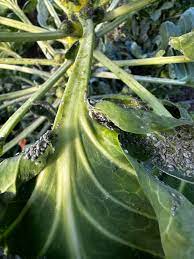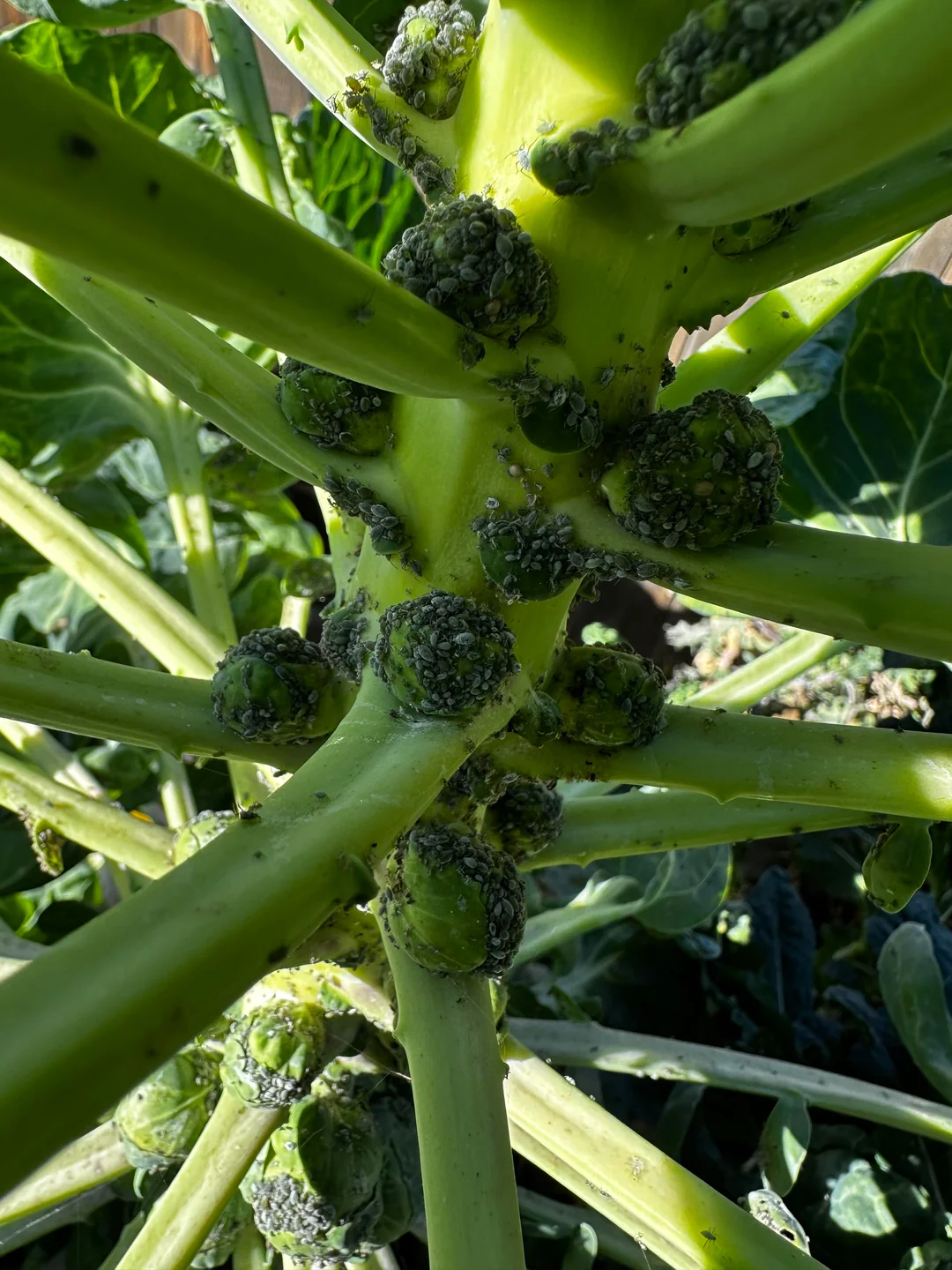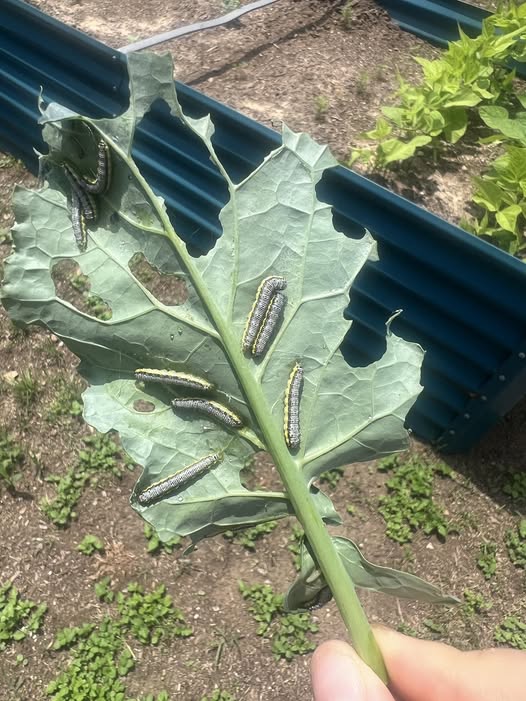Oh no! It sounds like you’re dealing with a pest problem on your Brussels sprouts and cabbage. These plants are often targets for insects like cabbage worms, aphids, or flea beetles. Here are some steps and solutions to help you deal with these pests and protect your crops:

1. Inspect and Identify the Pest
First, try to figure out what kind of pests are causing the damage. The most common culprits include:
- Cabbage worms (green caterpillars that blend in with the leaves)
- Aphids (tiny, soft-bodied insects that cluster on leaves)
- Flea beetles (tiny jumping beetles that leave small holes in leaves)
- Slugs (which leave slime trails and chew on leaves at night)
Once you identify the pest, you can choose the best solution.

2. Natural Solutions
Here are some organic, non-toxic ways to manage pests:
- Handpicking: If you see caterpillars or worms on your plants, you can remove them by hand. Check the undersides of leaves, as that’s where they often hide.
- Neem Oil: Neem oil is a natural pesticide that’s safe for plants and effective against a variety of pests. It works by disrupting the pests’ feeding and breeding cycles. Be sure to apply it in the early morning or evening to avoid harming beneficial insects like bees.
- Diatomaceous Earth: Sprinkle food-grade diatomaceous earth around your plants. This powder is harmless to humans and animals but deadly to soft-bodied pests like aphids and slugs. It works by drying out their exoskeletons.
- Garlic Spray: You can make a homemade garlic spray to deter pests. Blend a few garlic cloves with water, strain it, and spray it onto the leaves. The strong smell can repel insects.
- Companion Planting: Some plants act as natural pest deterrents. Planting sage, basil, or nasturtiums near your cabbage and Brussels sprouts can help keep pests away. Nasturtiums, in particular, attract aphids, which can help draw them away from your crops.
3. Insecticidal Soap
If you have an aphid or soft-bodied insect problem, insecticidal soap is a great option. It works by suffocating the insects and is safe for your plants. Just be sure to follow the instructions and apply in the early morning or evening to avoid harming beneficial insects.
4. Floating Row Covers
If you’re dealing with flying pests like cabbage moths (which lay eggs that turn into caterpillars), using row covers can be very effective. These lightweight fabric covers allow sunlight and water through but keep pests out. Be sure to secure the edges tightly to prevent pests from getting underneath.
5. Neem Oil or Soap-Based Sprays
If you’re dealing with a persistent pest problem, a neem oil spray or a soap-based insecticide can help manage the infestation. Both are effective against a variety of garden pests, including aphids, whiteflies, and caterpillars. Just be sure to spray the undersides of leaves where pests often hide.
6. Attracting Beneficial Insects
Beneficial insects, like ladybugs and predatory beetles, can help keep pest populations in check. If you create an environment that attracts these helpful critters (such as by planting flowering herbs or having a water source nearby), they can help with natural pest control.
7. Slug and Snail Traps
If slugs are the issue, you can set up traps using beer or a mixture of water and sugar. Slugs are attracted to the scent and will crawl into the trap and drown. You can also put up copper tape around the base of the plants, as the metal gives them a mild shock that deters them from climbing.
8. Healthy Soil and Mulching
Healthy plants are more resilient to pests. Make sure your soil is rich in nutrients by adding compost, and consider using mulch to help retain moisture and deter pests like slugs. Mulch can also prevent weeds, which could harbor pests.
9. Rotate Crops
Pests often target the same plants year after year. Crop rotation helps break the pest lifecycle and reduces the chances of future infestations. If you can, plant different crops in the same spots next season to confuse the pests.
Note: Be sure to check your plants regularly. The earlier you notice pests, the easier it is to control them. If you have a heavy infestation, you may need to repeat treatments or try multiple methods to get rid of the pests.

